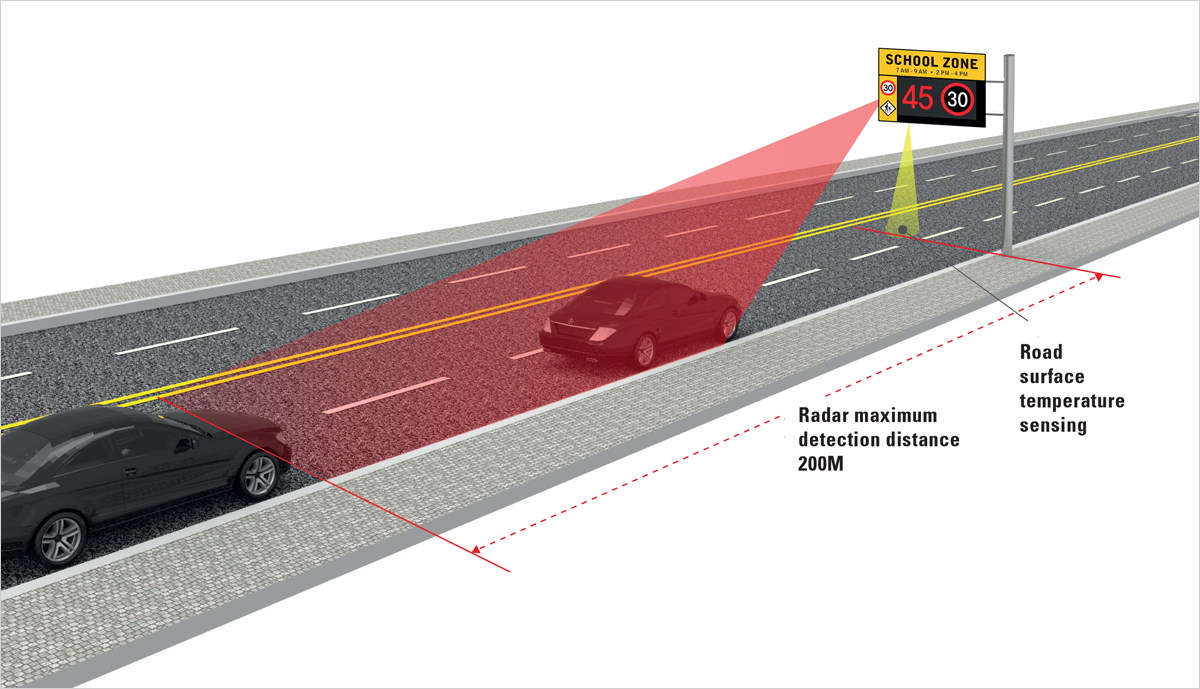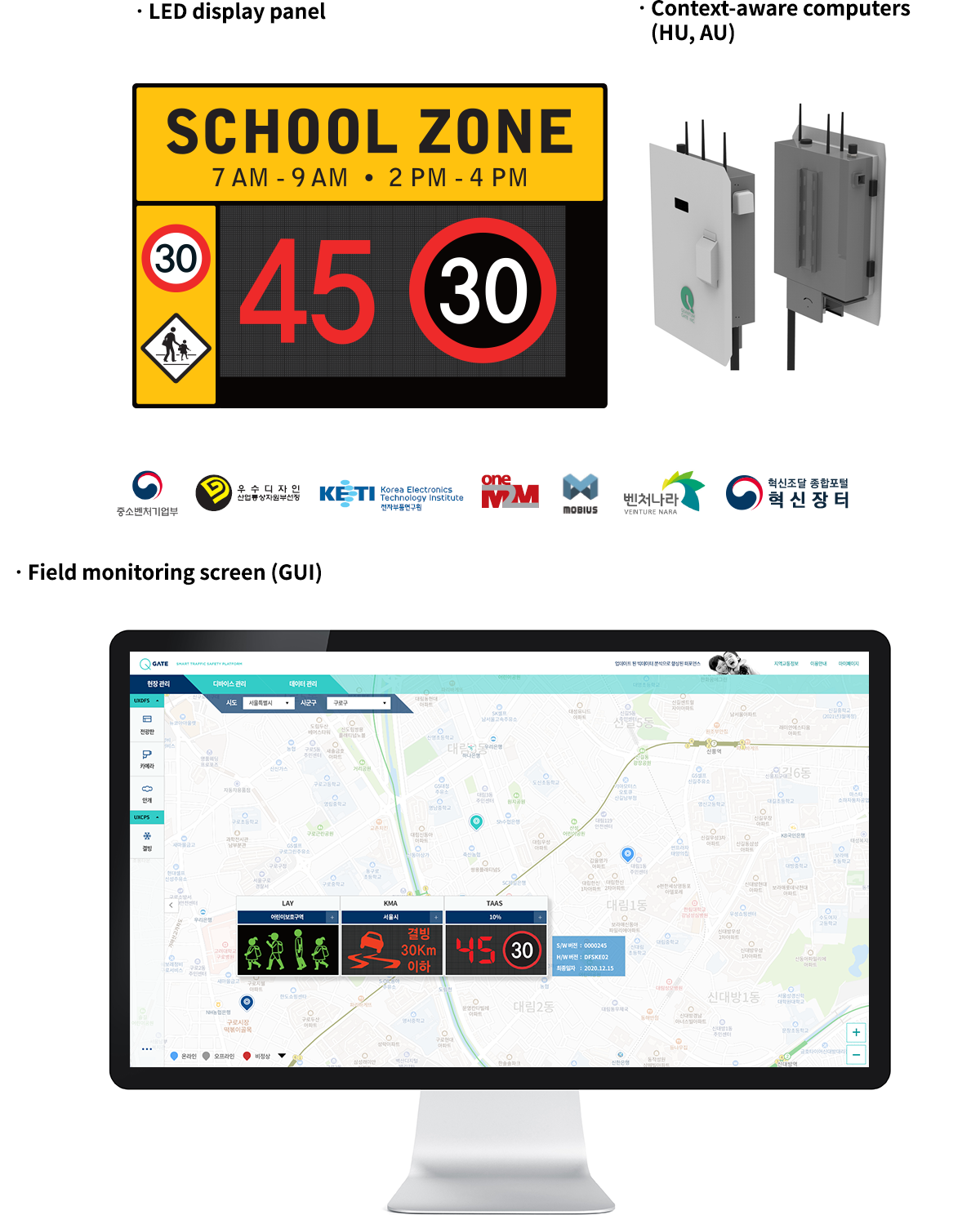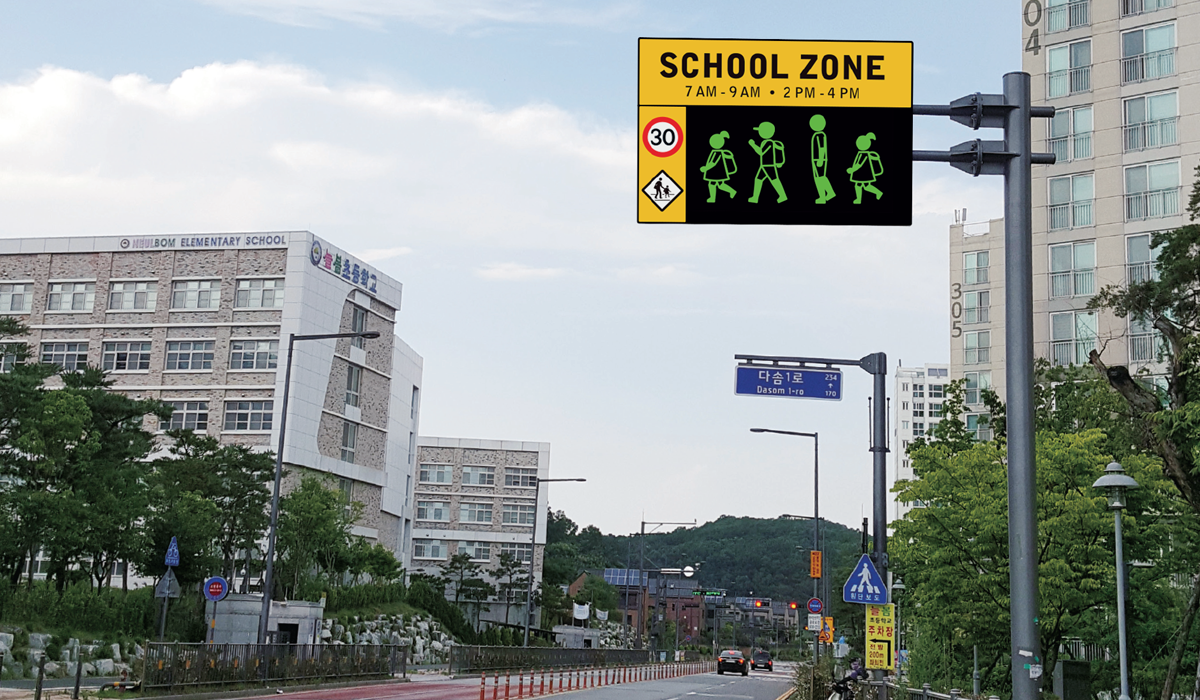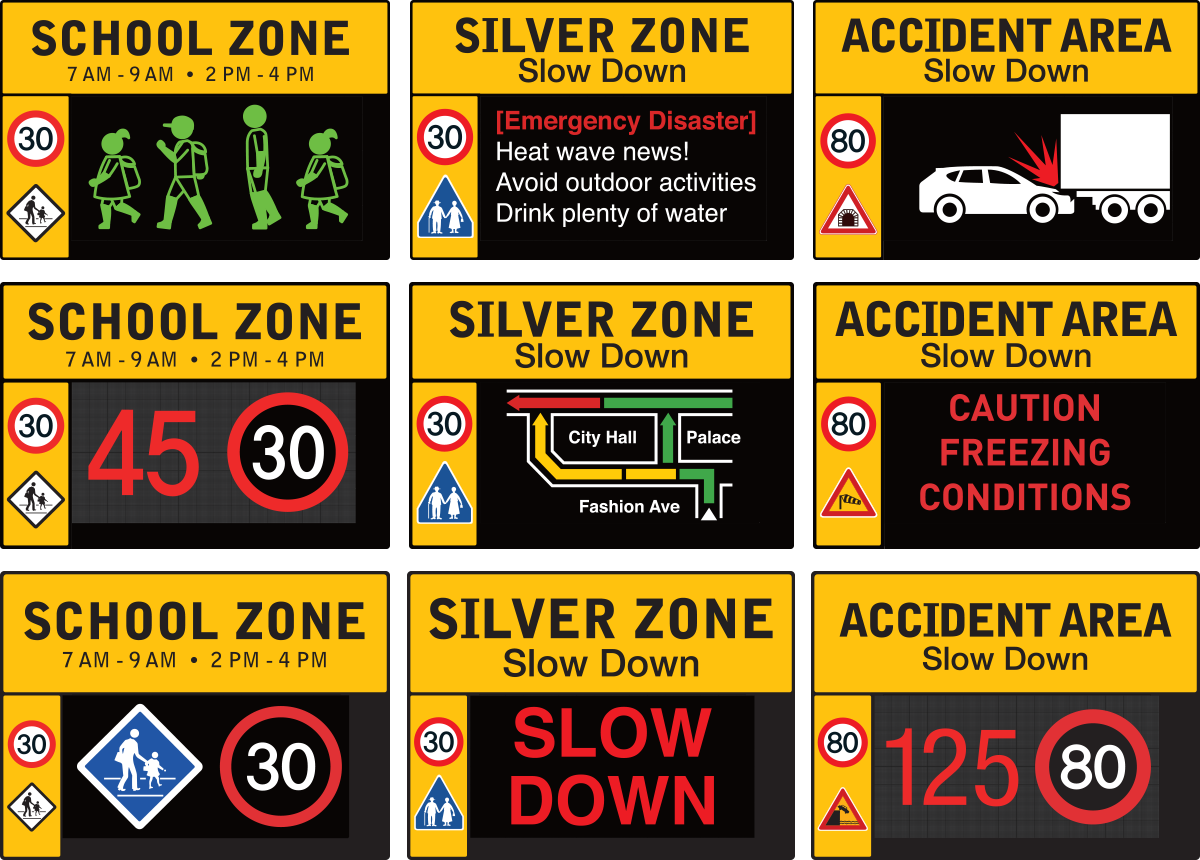UX DFS Overview
The User Experience Driver Feedback System (UX DFS) is an intelligent driver feedback system. It is a user-centered smart traffic safety system developed based on IoT and Bigdata to prevent traffic accidents in pedestrian zones and accident-prone areas.
UX DFS is a new type of convergence/composite solution based on hyper-connected IoT sensing and edge computing technology designed to monitor various situations such as traffic, weather, and safety on regular roads in urban areas, and it provides customized information and operational control to facilitate such functions.

Main Products

Application Examples

Contextual display graphics

Main Features
-
3D traffic situation analysis
- Combines road history information (TAAS) and current speed information of vehicle (radar), identifies road surface conditions (icy, wet roads) using IoT sensor (air temperature, humidity, road surface temperature) information, controls LED brightness using illuminance sensors (preventing light pollution).
-
Traffic accident warning system
- Based on data from analyzing traffic situations, a traffic accident risk analysis algorithm is used to classify traffic accidents into caution, warning, and risk categories, and to predict the probability of an accident occurring.
-
Sensing of risk,
User Experience (UX)- A danger warning/alert is displayed on a large LED panel. The message is expressed using letters, numbers, pictograms, and animations so that the driver can sense risk at a more intuitive level.
-
oneM2M
- Transfers, synchronizes, and controls data acquired and analyzed from the system to other smart devices developed based on oneM2M.
-
Analyzes Bigdata,
compatible with smart city integration platforms.- Analyzes Bigdata, compatible with smart city integration platforms.
Compatible with the Ministry of Land, Infrastructure and Transport’s smart city integration platform.
-
Autonomous driving support V2I
- Supports safe driving by delivering information on a section of road acquired through the second-phase development to be carried out in the future to autonomous vehicles (e.g. Selecting detours, slow-moving traffic, etc.)